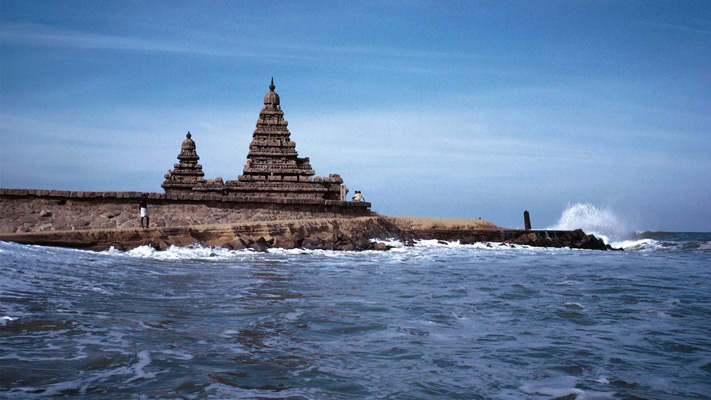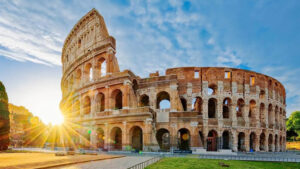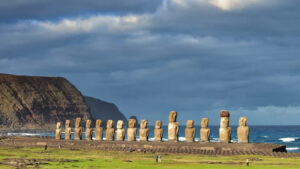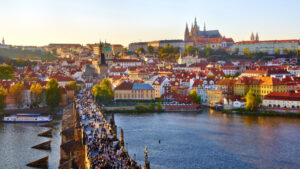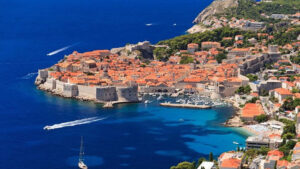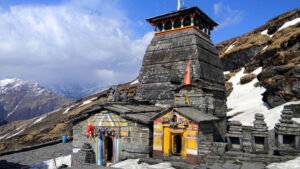TAMIL NADU TEMPLE TOUR – EXPLORE THE SACRED TEMPLES AND DISCOVER THE DIVINE

Tamil Nadu is known for its rich cultural heritage and ancient temples, many of which date back several centuries. A temple tour in Tamil Nadu is a unique experience that offers visitors a glimpse into the state’s history, culture, and religious practices. Here are some key highlights of a temple tour in Tamil Nadu:

1. Architecture: Tamil Nadu is home to some of the most stunning temple architecture in the world, with intricate carvings, colorful frescoes, and towering gopurams (entrance towers). The temples of Tamil Nadu are known for their unique Dravidian architecture style, characterized by pyramid-shaped towers and intricate stone carvings.
2. Religious Significance: The temples of Tamil Nadu are important centers of worship for Hindus, and many of them have significant religious and mythological importance. Each temple has its own unique history, rituals, and legends associated with it, which are fascinating to explore.
3. Festivals: The temples of Tamil Nadu are known for their vibrant festivals, which are celebrated with great pomp and grandeur. Some of the most popular festivals include Pongal, Navratri, and Diwali, among others. Visitors can witness colorful processions, music, dance, and other cultural activities during these festivals.
4. Temple towns: Many of the temples in Tamil Nadu are located in small towns and villages, which have their own unique charm and character. Visitors can explore the narrow streets, bustling markets, and local cuisine of these temple towns, which offer a glimpse into the everyday life of the locals.
5. Pilgrimage: Tamil Nadu is often called the “Land of Temples” and is considered one of the holiest places in India. A temple tour in Tamil Nadu is a spiritual journey for many, and pilgrims from all over the country and the world come to visit the temples here.
Tamil Nadu is known for its rich heritage of ancient temples, with many of them being centuries old and of great historical and religious significance. Here are some of the most famous temples of Tamil Nadu:
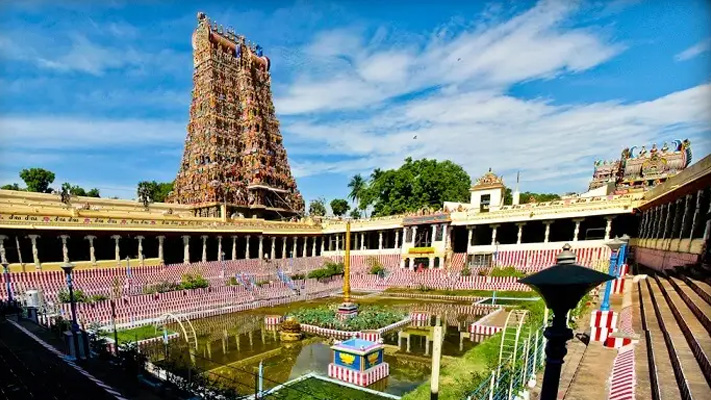
1. Meenakshi Amman Temple
Meenakshi Amman Temple is a historic Hindu temple located in the city of Madurai, Tamil Nadu, India. It is dedicated to Goddess Meenakshi, an incarnation of Goddess Parvati, and her consort Lord Shiva, known as Sundareswarar. The temple complex is a significant pilgrimage site and is one of the most visited tourist attractions in Tamil Nadu.
The history of the temple dates back to the 7th century when the Pandyan king, Kulasekara, built a small temple dedicated to Goddess Meenakshi. Over time, the temple was expanded and renovated by various rulers, including the Nayak kings of Madurai, who made significant additions to the temple’s architecture.
The temple complex is spread over an area of 14 acres and is known for its stunning architecture and intricate carvings. The gopurams (entrance towers) of the temple are particularly impressive, with their intricate sculptures and paintings depicting various mythological stories.
One of the most famous features of the temple is the Hall of Thousand Pillars, which is a massive mandapam (hall) supported by 985 pillars, each of which is intricately carved with unique designs.
The temple also houses several shrines dedicated to various deities, including Lord Vishnu, Lord Ganesha, and Lord Murugan, among others. The main shrine of the temple is dedicated to Goddess Meenakshi and Lord Sundareswarar, and it is believed that the deities are married in a grand ceremony every year.
2. Brihadeeswarar Temple
Brihadeeswarar Temple, also known as the Peruvudaiyar Kovil, is a famous Hindu temple located in the city of Thanjavur, Tamil Nadu, India. It is dedicated to Lord Shiva and is considered one of the largest and most important temples in Tamil Nadu.
The temple was built by the Chola emperor Raja Raja I in the 11th century and is known for its impressive architecture and intricate carvings. The main attraction of the temple is the towering vimana (entrance tower) which stands at a height of 66 meters, making it one of the tallest vimanas in India. The vimana is made of granite and is believed to have been built from a single rock.
The temple also has a massive Nandi statue, which sits outside the main shrine and is carved out of a single rock. The statue is 6 meters long and 3.7 meters tall and is considered one of the largest Nandi statues in India.
The main shrine of the temple is dedicated to Lord Shiva and houses a lingam (phallic symbol of Lord Shiva) that is 3.7 meters tall. The walls of the shrine are adorned with intricate carvings and paintings depicting various scenes from Hindu mythology.
The temple complex also houses several other smaller shrines dedicated to various deities, including Lord Ganesha, Lord Murugan, and Goddess Durga, among others.
3. Ramanathaswamy Temple
Ramanathaswamy Temple is a famous Hindu temple located on the island of Rameswaram in Tamil Nadu, India. It is dedicated to Lord Shiva and is considered one of the most important pilgrimage sites for Hindus. The temple is believed to have been built in the 12th century by the Pandya king Jeyaveera Cinkaiariyan.
The temple is known for its impressive architecture, which combines both Dravidian and Islamic styles. The main attraction of the temple is the long hallway, known as the Ramanathaswamy Temple corridor, which is 197 meters long and is lined with 1212 carved pillars. It is believed to be the longest temple corridor in the world.
The temple also has several other smaller shrines dedicated to various deities, including Lord Vishnu, Lord Ganesha, and Goddess Parvati, among others. The main shrine of the temple is dedicated to Lord Shiva and houses a lingam (phallic symbol of Lord Shiva) that is believed to have been installed by Lord Rama himself.
The temple is also famous for its 22 holy wells, known as Theerthams, which are believed to have curative properties. Devotees take a ritual bath in the holy waters before entering the main shrine of the temple.
The Ramanathaswamy Temple hosts several festivals throughout the year, including the Masi Magam festival, which is celebrated in February-March and attracts a large number of devotees from across the country.

4. Sri Ranganathaswamy Temple
Sri Ranganathaswamy Temple is a famous Hindu temple located in the city of Srirangam, Tamil Nadu, India. It is dedicated to Lord Vishnu and is considered one of the most important temples in South India. The temple is believed to have been built in the 8th century by the Chola dynasty and was later expanded by the Vijayanagara and Nayak dynasties.
The temple complex is spread over an area of 156 acres and is surrounded by seven concentric walls, which are believed to symbolize the seven layers of the earth. The temple has 21 gopurams (entrance towers), the largest of which is the Rajagopuram, which stands at a height of 73 meters, making it one of the tallest temple towers in Asia.
The main attraction of the temple is the sanctum sanctorum, which houses the presiding deity, Lord Ranganatha, a reclining form of Lord Vishnu on the serpent Adisesha. The deity is believed to be one of the largest in India, measuring 6 meters in length and 3.5 meters in height.
The temple also has several smaller shrines dedicated to various deities, including Lord Ganesha, Lord Murugan, and Goddess Lakshmi, among others. The temple complex also includes several mandapams (pillared halls) and tanks, including the famous Chandra Pushkarini tank.
The Sri Ranganathaswamy Temple hosts several festivals throughout the year, including the Vaikunta Ekadasi festival, which is celebrated in December-January and attracts a large number of devotees from across the country.
5. Kanchipuram Temples
Kanchipuram is a city in the Indian state of Tamil Nadu that is known for its rich cultural heritage and numerous temples. The city is also known as the “City of Thousand Temples” and is considered one of the seven most sacred cities in India.
Some of the most famous temples in Kanchipuram include:
· Kailasanathar Temple: This temple is dedicated to Lord Shiva and is considered one of the oldest temples in Kanchipuram, dating back to the 8th century. The temple is known for its intricate carvings and is a fine example of Dravidian architecture.
· Ekambareswarar Temple: This temple is dedicated to Lord Shiva and is one of the largest temples in Kanchipuram. The temple complex is spread over an area of 20 acres and has several mandapams, tanks, and shrines. The main attraction of the temple is the 1000-year-old mango tree that is said to bear four different types of mangoes.
· Varadharaja Perumal Temple: This temple is dedicated to Lord Vishnu and is considered one of the most important Vishnu temples in South India. The temple is known for its 100-pillar mandapam and the golden lizard that is said to be installed on the roof of the sanctum sanctorum.
· Kamakshi Amman Temple: This temple is dedicated to Goddess Kamakshi, a form of Goddess Parvati. The temple is known for its golden chariot and is considered one of the most important temples in Kanchipuram.
· Kanchi Kailasanathar Temple: This temple is dedicated to Lord Shiva and is one of the most famous temples in Kanchipuram. The temple is known for its intricate carvings and is considered one of the finest examples of Pallava architecture.
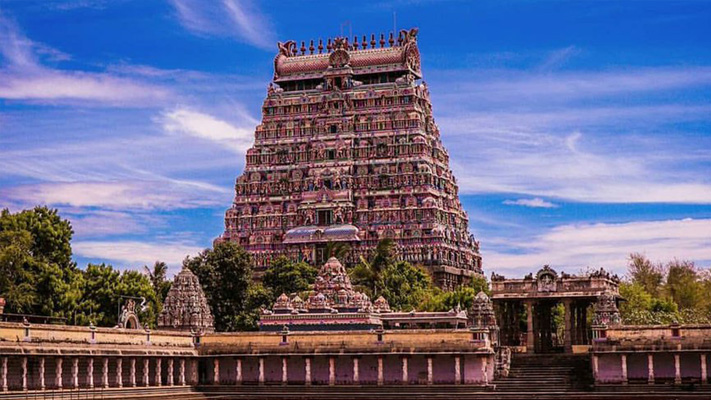
6. Thillai Nataraja Temple
Thillai Nataraja Temple is a Hindu temple dedicated to Lord Shiva, located in the town of Chidambaram in the Indian state of Tamil Nadu. The temple is one of the five Pancha Bootha Sthalams, which represent the five elements of nature – Earth, Water, Fire, Air, and Ether.
The temple is known for its unique architecture, which includes five main sabhas (halls) that represent different elements of nature. The most famous of these is the Kanaka Sabha, which is made entirely of gold and is located at the heart of the temple complex.
The temple is also famous for its Nataraja statue, which depicts Lord Shiva in his cosmic dance form. The statue is made of a special alloy of five metals and is considered one of the finest examples of Chola bronze casting.
Another unique aspect of the Thillai Nataraja Temple is its association with the Tamil saint, Thirugnana Sambandar. According to legend, the saint was a child prodigy who was blessed by Lord Shiva himself and became one of the most important figures in the Tamil Bhakti movement.



